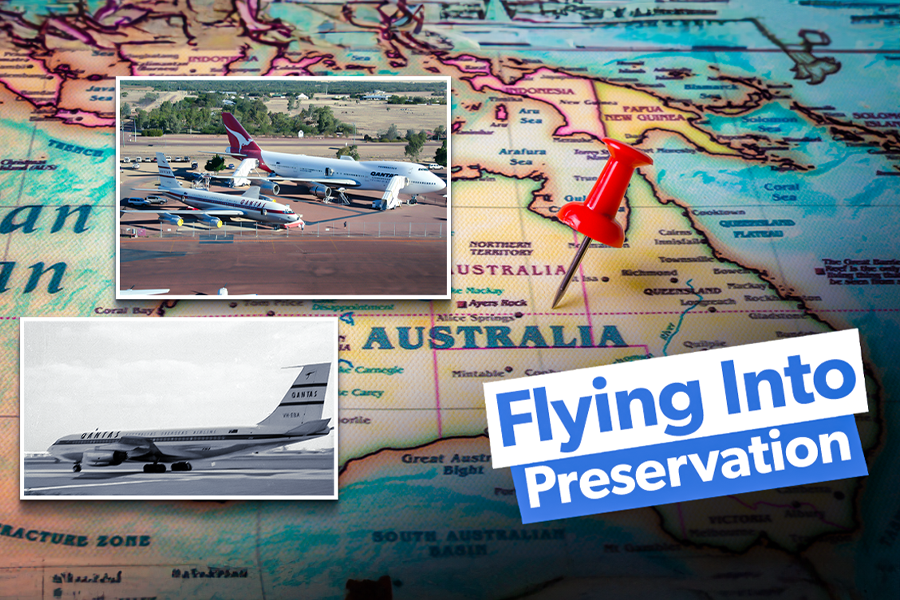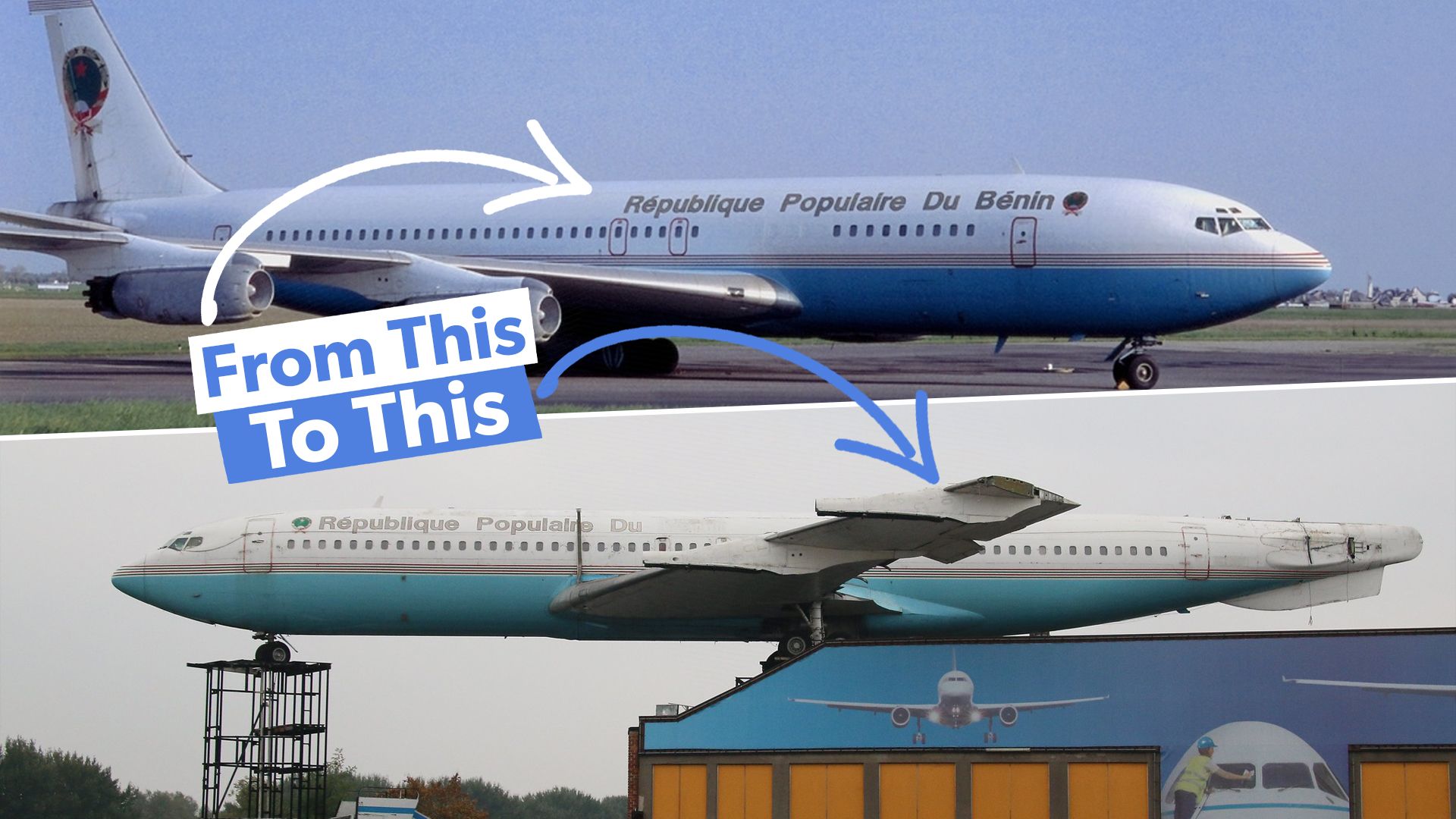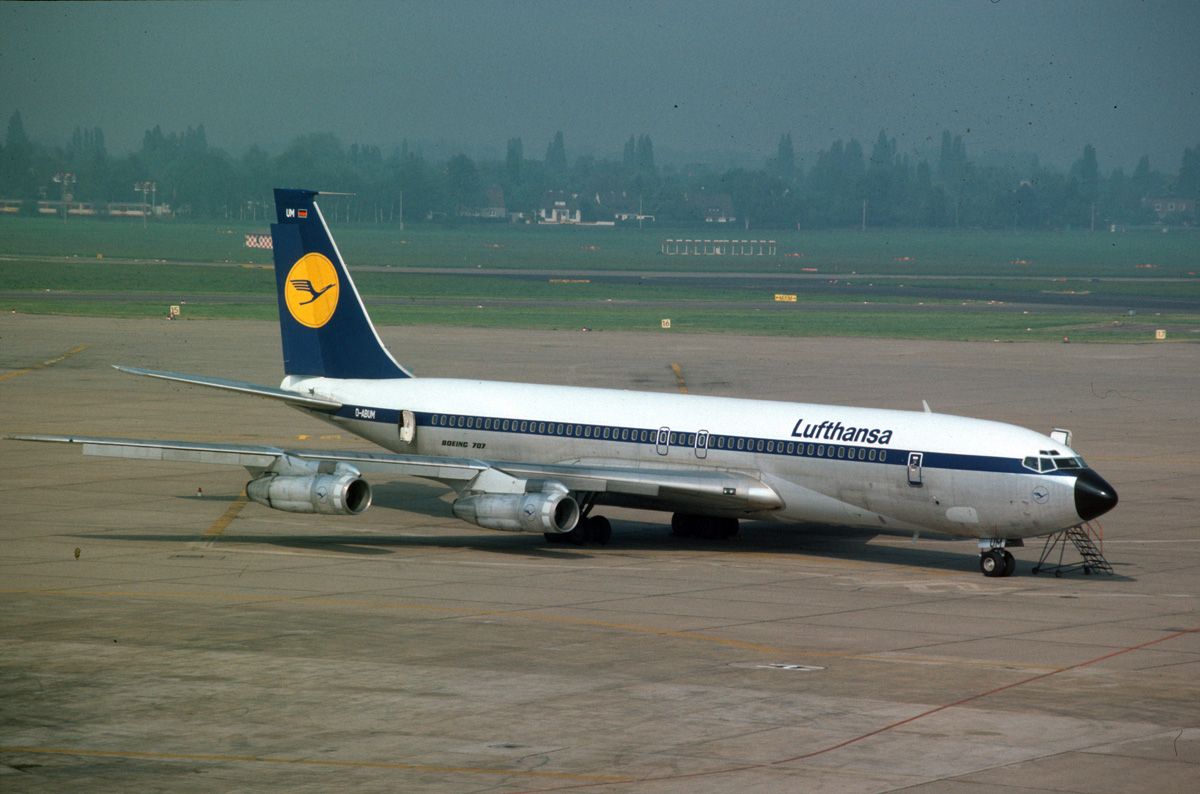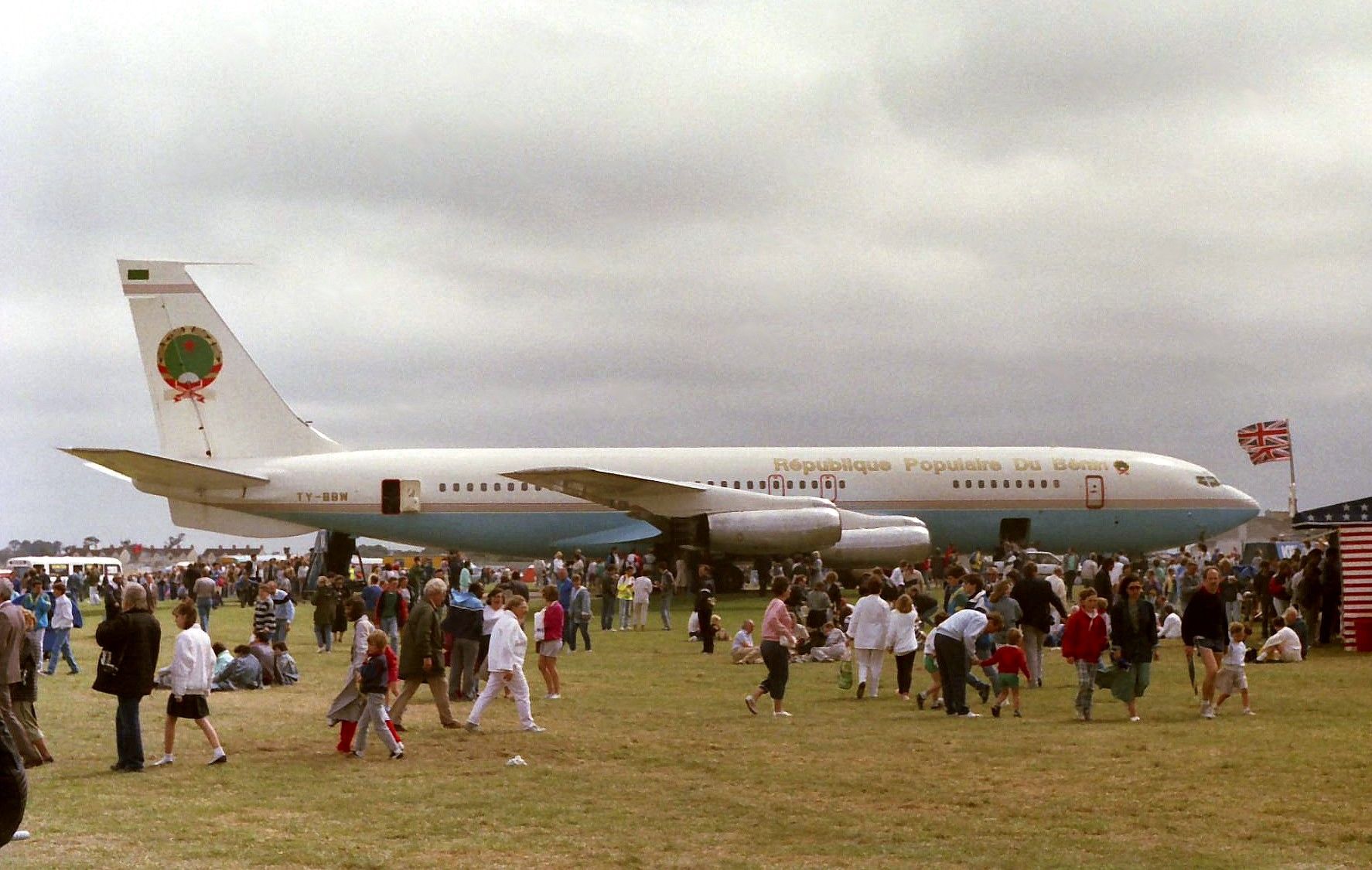Summary
- After multiple ownership changes, a former Pan American World Airways Boeing 707 now sits on the roof of an exhibition center in Belgium.
- The aircraft was stranded in Belgium in the 1990s due to engineering issues and was later acquired by Walter Govaert.
- After spending a few years used as a training center for aircraft cleaners, it was eventually transferred to the roof of Expo-Gowalt in Wetteren.
Taking to the skies on December 20, 1957, the Boeing 707 has graced airports worldwide for over 65 years. The pioneering commercial jetliner became a noted hit with carriers big and small, though its appeal was not just limited to commercial operators.

Related
The Story Of The Boeing 707: The Jet Age Aircraft Of Choice
Looking back at the early days of the legend.
A flying force
After officially entering service in 1958 with launch customer Pan American World Airways, the Boeing 707 went on to serve with an eclectic mix of operators, including the likes of:
- Alaska Airlines
- American Airlines
- Continental Airways
- TWA
- Western Airlines.
The aircraft can be credited with assisting in the rapid expansion of domestic and international air travel. Within several years, the Boeing 707 had outpaced its competitor, the similarly configured Douglas DC-8, in terms of order numbers. During this pivotal era of aviation, the Boeing 707 attracted customers from all backgrounds, opened up the skies to a broader demographic, and helped to commercialize the tourism industry.
Boeing’s success was largely owed to its ability to provide almost tailor-made variants for its customers, such as Qantas’ long-range mode and larger engines to support hot-and-high operations for Braniff International Airways’ South American network. Despite posing a high financial risk to the manufacturer, the gamble paid off, with Boeing and the 707 quickly integral to the cultural zeitgeist of the late 1950s and early 1960s. Boeing explained,
“In just two years, the 707 would help change the way the world traveled. Travel by air eclipsed travel by rail and sea. The dawn of a new era in travel helped to make the terms “Boeing” and “707” fashionable. Requests poured into Boeing for rights to use “707” for naming products. Jantzen swimwear titled its 1957 collection “the 707.”
Private flights ready for take-off
By the time the 1980s rolled around, the Boeing 707 was a veteran aircraft, comparable to the limited number of 757s and 767s still in operation today. Several units had already changed hands multiple times as airlines replaced the quadjet with newer and more fuel-efficient twin and trijets. It was through this that the Government of Benin came to acquire one airframe designated for presidential use in the mid-1980s.
Taking on the registration TY-BBW, the aircraft was initially delivered to PanAm in May 1961. The jet was phased out in favor of the Boeing 747 jumbo jet in the early 1970s, joining Lloyd International Airways in 1971, before brief stints with Bahamas Word, Bahamas World, MCA, Southeast, Quantum, and Age of Enlightenment Aviation through the mid-1970s and 1980s.
According to The Brussels Times, Korean religious leader Sun Myung Moon outfitted the cabin with a gold-tapped bathtub, private cinema, and mahogany bed. While under the ownership of the Benin state, the aircraft was grounded at Belgium’s Ostend–Bruges International Airport (OST) in 1990 amid safety issues. The Boeing 707 was left sitting there, racking up a massive parking bill for the West African nation over the next five years.
Meeting its fate
During the mid-1990s, entrepreneur and politician Walter Govaert moved the aircraft to an abandoned car park near Wetteren in the Belgian province of East Flanders, with the jet deployed as a training center for aircraft cleaners.
Its second life was not to last, however. After some debate, the local council determined that the owner didn’t have the proper paperwork to park the plane on their land. After denouncing the decision as “childish and petty,” Govaert chose to have the 707 lifted by two cranes and move to the roof of the Expo-Gowalt Exhibition Center in Wetteren.
As of 2024, TY-BBW remains part of the center’s transport museum, displayed in the company of a Lockheed T-33 Shooting Star trainer jet.

You might also like:
Did You Know An Ex-Qantas Boeing 707 Once Flew From London Southend To Queensland For Preservation?
VH-XBA is now displayed at the Qantas Founders Museum in Longreach, Queensland.
The last commercial Boeing 707 flight operated by a carrier touched down on October 30th, 1983, although a handful of 707s remained in passenger operations around the world for years after this. While the Lebanese flag carrier, Middle East Airlines, was one of the primary late operators of the 707, Iran’s Saha Air continued to operate commercial flights with its 707s until April 2013. Today, the only 707s that remain in service are used as military aircraft.
In addition to Pan Am, other major Boeing 707 operators over the years have included:
- Varig
- Kenya Airways
- American Airlines
- Cathay Pacific
- Air India
- Air Ceylon
- Singapore Airlines
- Olympic Airlines
- TAP Air Portugal.

You might also like:
The Story Of The Boeing 707: The Jet Age Aircraft Of Choice
Looking back at the early days of the legend.



